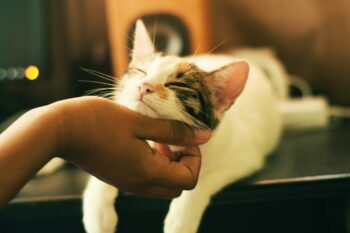There are many reasons a cat may become disabled. A run-in with a car, a fall from a tree or another accident can make a cat lame or even lose a limb. With old age, some cats develop cancer, become arthritic, deaf or blind. Disease, physical injury, poisoning, and conditions such as glaucoma and cataracts can also result in loss of physical faculties, including sight.
Any of these circumstances can mean big changes for kitty. No longer can she conquer the world in quite the same way she used to. Now she must find a way to cope with these new-found limitations. As a caring pet owner, you too, will need to make some changes to accommodate a disabled cat’s needs. Here are some steps you can take to keep your disabled cat safe and comfortable:
- Staircases
Arthritic cats do not usually like walking up and down stairs, either because it’s painful or because they just do not have the strength for it. “You may want to put a carpeted ramp next to the staircase so that your cat can more easily walk up and down the steps,” advises Maryland veterinarian, Joanne Howl, DVM.
- Window Sills and Other High Places
Put carpeted ramps underneath window sills and leading up to your bed (if your cat has been in the habit of sleeping with you) and the couch, so your lame or arthritic cat can still get up there to rest. “Your cat’s still going to want to try to go there,” notes feline behavior expert, Myrna Milani, DVM. “It’s better to help the cat get up there safely, rather than try to block off the area with obstacles and have the cat get hurt even worse trying to get through there.” You can also put pillows and rugs under the window sills to serve as crash-mats in case the cat does fall.
- Arranging the Furniture
If your cat has vision problems, keep your furniture in the same place and don’t leave obstacles (such as boxes or shopping bags) in unexpected places where she could walk into them. If your cat is prone to bumping into furniture, try padding table and chair legs with cushions or foam to reduce impact damage.
- Doors
Sometimes a door will be slightly ajar and a blind cat will go behind the door and find herself stuck between the door and the wall. This can be a very scary situation for the cat. To prevent this, Milani suggests you spray some cologne or unscented deodorant about cat-head high on the door jams, on the side with the hinges, to deter the cat from going behind the door.
- Litter Boxes
Make sure your cat has easy access to all litter boxes. A disabled cat may need several boxes, so it’s never a long, difficult trip to the box no matter where she is in the house. “Don’t expect an arthritic or lame cat to climb stairs to get to a litter box,” Howl says. You might want to cut out a section on one side of the litter box so that cat does not have to step over the side of the box to get in.
- Other Pets
If you have other dogs or small children, provide safe areas which your handicapped cat can escape when play gets too boisterous or aggressive. One way to do this is by putting a baby gate or plywood blockade in front of a doorway to keep dogs and children out of the room the disabled cats in. Or provide crates and igloo-style beds that your disabled cat can escape to.
Look around your home and think about what else you can do to make life easier for your handicapped cat. But whatever your cat’s disability, consider her abilities as well as her limitations, and be careful not to baby she too much. “You need to convey your confidence to your cat–that you know she can handle this–because your cat’s going to pick up on your emotions,” Milani says. “If you act like everything’s normal, your cat will think so too.” With a can-do attitude and a few changes at home, you can help your disabled cat live a safe and happy life.







